
Lenlo: 2020 was a year many would probably like to forget. Trapped inside from a pandemic as, at least in America, the world burns down around them. But there was one good thing not being allowed to leave our house gave us: anime. So much time to watch anime. From the wild rides of Dorohedoro and Attack on Titan from Studio MAPPA to the relaxing works of Sleepy Princess and Asteroid in Love from Studio Doga Kobo, we had time to experience it all. And now that the year is over there is just one last thing to do before we can leave it all behind: yell about which one is the best, or worst, until the other writers here at Star Crossed give up and accept it. So without further ado let’s look at the best and the worst of 2020 before we wave goodbye to the worst year in a long, long time.
Worst of the Worst
Worst Show: Japan Sinks
Armitage: It’s tradition to start off these year-end awards posts with the worst stuff we had to sit through in the year but this time, for a change, we are actually starting on a high! And by that I mean a literal high because Sweet Jesus on a bicycle, what were the people who made this smoking up during its production??! I have never been a fan of Masaaki Yuasa’s animation style but the least you can expect from him is to deliver some sort of thematic coherence in all of his series. And then, there’s Japan Sinks. Best described as a love-child between disaster dramas like Tokyo Magnitude and a worrying lack of script supervision, Japan Sinks is a travesty on every narrative front. No caricatures it sells as characters are relatable, people are killed off purely in the name of shock value, in-your-face nationalism is rampant and decisions made by all of said caricatures make as much sense as a chicken petting a leprechaun. At a point you can tell that the creators just don’t know how to write a series because they decide to go full-Daniel. And as is written in holy anime sacrament, you never go full-Daniel.
Runner-up: MAGIA RECORD, for being the spinoff that no one asked for, and leaning so much on gacha game conventions that the story meandered instead of advancing forward.
Biggest Disappointment:
Kamisama ni Natta Hi
Amun: Ah, Jun Maeda. I won’t even touch on the latest drama, but certainly a polarizing figure to say the least. However, I was firmly in the positive camp with Angel Beats and Charlotte being quite enjoyable (I’m mixed on Little Busters). Naturally, I had high hopes for Kamisama ni Natta Hi and it delivered – but only in the first half. A “last summer” show – a known, established trope, no problem. Like a magician’s trick judged not on whether you’re fooled but on showmanship, I expected Kamisama to walk down established paths – familiar but well executed. Sadly, the “feels train” detonated spectacularly in the final episodes, undoing any good or goodwill accumulated by a decent plot. With a finale of unprecedentedly poor writing (possibly only rivaled by School Days, depending on if you took the show seriously), Kamisama drove decent characters, setting, and story directly into the realm of the unbelievable and, frankly, a little disturbing – all for a shoe-horned “good ending”. Which it may have been for the author’s warped vision, but no other sentient viewers will agree. Many shows are bad, but few manage to build such expectations only to damn them to such depths. For this disparity, Kamisama ni Natta Hi will certainly be remembered…and not fondly.
Runner-up: THE GOD OF HIGH SCHOOL, for being a massively entertaining popcorn romp through its first half, and a head-scratching crapfest that got so absurd and over-the-top in its second half that it would even make Michael Bay blush while loading an episode on Crunchyroll.
Worst First Episode:
Dokyuu Hentai HxEros
Armitage: What is worse than an accidental boob-grab in an anime? Turns out the answer to that ever-relevant question is an accidental boob-grab with sombre date-night music playing in the background. HxEros is a show that gives us multiple such philosophical quandaries to ponder about in the duration of its unbearably long 24-minute premiere. It is ever ready to push the boundaries of what can be considered ‘regular anime’ without it becoming straight-up Hentai. Buck-naked ass shots, gravity defying teenage breasts, light-emitting nipples, you name it – HxEros has an embarrassment of all such riches. This is a show unafraid to embrace its perversity yet features a female lead literally afraid to embrace anyone, for fear of devolving into orgasmic convulsions. It might only have qualified as the worst anime premiere of the year but in actuality, HxEros is right up there with the worst concepts to have ever been realized in the entire medium of anime.
Runner-up: PLUNDERER, for combining an asinine, perverted-yet-overpowered main character and an utterly useless, implausible heroine in a story too contrived to bear.
Worst Character:
Daniel (Japan Sinks)
Mario: Japan Sinks is odd in that while it can be seen as an examination of Japanese culture, there are also a whole lot of foreigners in this show that serve very little purpose. Daniel is not merely a poorly-written character with hilariously bad dialogue; his very existence is at odds with the show. It was never clear what Japan Sinks wanted to do with his character: part-comic relief, part-emotional support, part-tragic figure, the guy is so scattered that it’s hard to relate to him. But maybe, in a grim year like 2020, his cheerful and relaxed attitude was what we desperately needed.
Runner-up: YOUTA NARUKAMI (Kamisama ni Natta Hi), for being unable to follow a single direction, bribing an obviously ill girl with video games, and having a personality as dynamic as toilet paper.
General Categories
Best First Episode: Akudama Drive
Amun: Anime originals are rightly or wrongly judged differently than shows with significant literature backing them – since not much is known, there is more anticipation to see what will come out. Akudama Drive burst into the Fall season with as big a bang as any premiere I’ve seen. A cyberpunk world that makes the eyes drool. Strong, unique characters that you instantly fall in love with. All that you love about Danganronpa without any of the crap – the characters, the transitions, the colours. Animation that’s jaw dropping. Stakes as big as the cyberpunk world itself – a prison break on the world’s most prolific killer?! No, you tell me – what more can you ask for from a premiere? I could not wait until the next episode dropped, not because of a need to know what happened, but because I longed to spend another half hour in that world. While the rest of the season admittedly strayed and probably regressed, I will never forget the excitement Akudama Drive “Se7en” brought me.
Runner-up: GREAT PRETENDER, for pulling us in with clever writing and charisma right from the first moment the characters appear on screen.
Best Single Episode: Eizouken 08
Wooper: Tall, money-conscious Kanamori was Eizouken’s breakout character, and the awkward, unstoppably creative Asakusa was its center. Yet its strongest spotlight was reserved for the third member of their trio, Tsubame Mizusaki, in this superlative episode. “The Grand Shibahama Festival” was her coming-out party as an animator – a statement to an oppressive student council, her disapproving parents, and especially herself that her talent and passion would never be bottled up. In leveraging her popularity as a model to promote the Video Society’s student film, Mizusaki made herself vulnerable to criticism and even capture, which she deftly avoided in a cheeky Metal Gear-inspired sequence. The film faced other obstacles, as well, including competition from other clubs and the unpredictability of live dubbing. But none of that compared to the moment when the lights dimmed and her months of work flickered to life on screen, forcing Mizusaki’s parents to reckon with the strength of her convictions; their supportive post-film conversation with her was the single sweetest moment that the year in anime had to offer.
Runner-up: DECA-DENCE 02, for completely recontextualizing its setting yet somehow managing to add more layers of depth to its world and characters.
Most Pleasant Surprise:
Maou-jou de Oyasumi
Amun: I almost wonder if the concept for Maou-jou de Oyasumi came about from a dare: make a comedy from the most bland premise imaginable. First episode came and went – I chuckled a little. Then the next Monday came, then the next. All of a sudden I’m here, cheering for this idiot princess who is decapitating demons to make fluffy pillows – huh? Maou-jou doesn’t set out to change your worldview or inspire you to great things – it’s a simple story of someone doing what she loves and not letting anything stand in her way. Granted, that thing happens to be getting a good night’s sleep, but it’s low bar makes it an endearing romp all the same. Straightforward as it may be, in no way am I deriding the quality of the story or supporting aspects (animation, VAs, music) – everything came together for a lovely, fluffy battle against insomnia and its allies. Even the ending left you feeling refreshed and cheerful – as a good night’s sleep should.
Runner-up: HAMEFURA, for being an otome isekai that is legitimately fun and enjoyable to follow.
Best Studio: MAPPA
Armitage: MAPPA gets a lot of crap from seasoned anime fans. And deservingly so. Most of their series tend to suffer from production issues especially in the latter halves of their runs. Even their most popular series – Male Homoerotica on Ice – suffered from the same. Yet year after year, they take their criticisms on the chin and try again. That’s why, it seems kind of ironic that in a year like 2020, when everything else was falling apart around us, the anime this much-maligned studio produced, for once, didn’t.
Be it the year’s heaviest-hitters in Jujutsu Kaisen & GoHS, the delightfully weird Dorohedoro, the less delightfully weird Gymnastics Samurai and even the straight-up weird Listeners. From a production standpoint, these were all shows which ended up being the cream of the crop for anime in 2020 and with even bigger hits like Attack on Titan and Chainsawman lined up, the MAPPA steamroller shows no signs of slowing down in the near future. And I for one, am happy for them. Good job, MAPPA!
Runner-up: DOGA KOBO, for their pleasantly understated production on titles like Yesterday wo Utatte and Maou-jou de Oyasumi (we don’t talk about IWGP).
Best OP: “G.P.” (Great Pretender)
Wooper: Yutaka Yamada’s hard bop composition “G.P.” features freestyle piano arpeggios, rolling snare hits, and screaming saxophones – and that’s just the first seven seconds. This jazzy opening was an excellent fit for its heist-centered parent series, with an infectious piano/bass groove that borrowed from the scores of western capers and spy flicks. Its visual accompaniment paid homage to Hollywood, as well, with a morphing silhouette style lifted from Steven Spielberg’s “Catch Me If You Can.” Each of the OP’s phases foreshadowed a different arc in Great Pretender’s run, from a bikini-clad woman in a swimming pool to the tenbou (scoring sticks) that hinted at mahjong’s importance to the final case. It even gave us new title cards for each arc, which appeared on screen as the brassy final notes of “G.P.” rang out before each episode. What an inventive, high-energy statement this OP was – together with the ED, they’re Great Pretender’s two greatest gifts of the year.
Runner-up: “CONTRADICTION” (The God of High School), for being the song boomers hate an infectious earworm which never failed to hype you up for some trashy shounen ass-kicking, even though the emphasis on ‘trashy’ increased multifold in later episodes.
Best ED: “Lost in Paradise”
(Jujutsu Kaisen)
Lenlo: It’s hard to say no to the infectious energy “Lost in Paradise” brings to the table. The music immediately hooks you with a blaring horn line and a strong bass beat. Meanwhile the visuals pull you along with their simplistic yet striking colors, showing you right away that this is like nothing else this year. The simple designs lend themselves to fantastically animated dance sequences while the dances themselves do a great job of telling us who these characters are. All the while the music continues on, timed so that each character gets their own section of music, further characterizing them. There might be EDs with better songs, or higher fidelity visuals this year. But none of them work together quite like “Lost in Paradise” does when all its parts fit together this well. There is a beauty in simplicity, especially when simplicity is done this damn well.
Runner-up: “THE GREAT PRETENDER”, for featuring one of the most iconic voices in rock history, accompanied with a whimsical story about a cat and godlike visuals. Cats sell, baby.
Production & Characters
Best Animation: Jujutsu Kaisen
Amun: Writing about animation is difficult – there’s an inherent mismatch in the media of print and motion picture. Jujutsu Kaisen presents an additional, unique difficulty – as with runner-up series God of High School, Jujutsu Kaisen utilizes camera techniques more commonly found in live blockbusters, with dynamic, spinning shots as the action unfolds. One of the highest compliments I can pay this series is the seamless integration of CG – and this is a show that’s heavily dependent on it for many of the exotic fight backgrounds. The post processing effects, particularly fire, fit the supernatural mood to a tee and didn’t disrupt the flow. The fight scenes are impeccably choreographed – while not directly related to animation, proper action direction lets those underpaid animators’ efforts really shine through. Finally, a special note to the OP and ED of the first cour – both feature original footage (and notable locations in Japan, as told by a recent Reddit post), distinctly different styles, and indisputable quality. All the accolades are deserved – Jujutsu Kaisen is a true feast for the eyes.
Runner-up: THE GOD OF HIGH SCHOOL, for being the ultimate style over substance series of the year; one that gave us visceral beat-’em-up-brawls galore and single-handedly turned Seong-Hu Park – also the director of the best animated series of the year – into a (anime) household name.
Best Background Art:
Keep Your Hands Off Eizouken!
Mario: It was a fierce battle between this series and the bold visual style of Great Pretender, but Eizouken edged it out at the end, and its win is definitely deserved. First, Eizouken’s backgrounds feel vivid and detailed down to every corner of Shibahama, from Asakusa’s cramped apartment to the underground shopping mall to various buildings at their school. Each location is fully realized and has a personality of its own. Moreover, Eizouken employs different visual styles to complement its narrative choices, and those sketchy fantasies raise its background art to a whole new level. Being a show about “looking around you for inspiration”, it’s no wonder that it packs a high level of detail into the town’s objects and architecture. It feels rich, cozy and most importantly, still leaves a lot to our imagination. It’s certainly got some of my favorite backgrounds in recent years.
Runner-up: GREAT PRETENDER, for its faithfulness to real-world locations and brash juxtaposition of color.
Best Soundtrack: Great Pretender
Wooper: The last time we got an anime soundtrack packing this much cool jazz, it was 2012 and Shinichiro Watanabe was directing a series dedicated explicitly to that style. Great Pretender makes it work nearly as well, using nimble piano improvisation and smooth upright bass licks as mood-setters, then shattering the peace with pounding drums and muscular horns whenever the crew’s latest caper goes off the rails. This quiet/loud dynamic nicely synergized with mystery man Laurent Thierry’s air of sophistication, as contrasted with protagonist Makoto Edamura’s impulsive personality. This expansive soundtrack didn’t limit itself to one genre, either – its pop and R&B insert songs gave the show’s standalone stories their own flavor, using one or two new tunes for each one. Of particular note were YVY’s “Our Love” and “Someday,” which underscored the London arc’s romantic angle, carrying several scenes that might not have gotten off the ground otherwise. Combine the sentimental balladry of those sorts of tracks with the versatile bebop of GP’s instrumentals, and you’ve got an OST that’s tough to top.
Runner-up: KEEP YOUR HANDS OFF EIZOUKEN, for capturing the emotions and sounds of creation in one of the most unique and energetic soundtracks of the year.
Best Voice Actor: Riho Sugiyama (Nami yo Kiite Kure)
Armitage: Much like Katarina, Minare Koda is also the heart and soul of her series. But unlike Hamefura, Nami yo Kiite Kure is not a particularly good one. It’s a production disaster, the character designs are unappealing and the storyline is all over the place. In fact, if not for Riho Sugiyama’s sensational performance as the frustrated and fiery Minare, I would not have finished the series at all. Like every other twenty-something stuck in a rut who just wants to scream about the unfairness of their life to the world, Miss Sugiyama makes Minare’s plight feel earnest and relatable. Being a radio host is not an easy task and being one for a network with limited airtime can be a logistical, breathless nightmare. I know this because Riho Sugiyama’s performance left me feeling exactly that way – gasping for air, disoriented and in awe of what I had seen.
Runner-up: AKARI KITOU, for seamlessly pulling off two different character types this year: the egocentric Kotoko in Kyokou Suiri, and shy high school girl Adachi in the yuri romance Adachi to Shimamura.
Best Character: Katarina Claes
Mario: This is the first time (and could very well be the only time) in this site’s AOTY history that a category had 15 different picks across our 5 voters. After much deliberation, we agreed on this winner. Katarina Claes, better known as Bakarina, is such a gem. She carries an entire anime series on her shoulders, and boy does she always make us smile with her big heart and thick head. Her own agenda is sweetly simple-minded, but the way she tries her best to “improve” her situation, thus changing the whole nature of her game world and those around her, is just a blast to watch. Katarina is the crown jewel of Hamefura and the anime knows that. Alternatively, check out our individual ballots to see which characters appeared there and which writer most closely matches your tastes.
Runner-up: MIDORI ASAKUSA, for giving everyone a glimpse into the highs and lows, the anxieties and frustrations, of the creative process and what it means to release your work for the world to see.
Best Cast: Golden Kamuy S3
Lenlo: It takes a special kind of cast to make a show like Golden Kamuy work. They have to have charisma, to bring gravitas to a scene, so that your drama can properly engage the viewer. Yet they can’t take themselves too seriously, or else your absurdist comedy will fall flat or undermine their personal journeys. Every single character, from Ogata’s stoic demeanor to Sugimoto’s steadfast stubbornness, are balanced on a knife’s edge and Golden Kamuy manages to walk that line perfectly for its entire run. One minute they could be relaxing, nude, in a Stenka only for the next to find them fighting a rabid animal in the forest. Or perhaps eating brains and joking around a campfire, only to end up in a tense sniper battle by the end of the episode. For somehow making this brilliant juxtaposition in tone and content work, for being infinitely entertaining whether it be through drama or comedy, Golden Kamuy’s ensemble takes its place as the Best Cast of 2020.
Runner-up: DOROHEDORO, for starring murderers so charming they’re impossible to hate.
Genre & Format
Best Comedy: Maou-jou de Oyasumi
Wooper: Last year we unanimously selected Kaguya-sama as 2019’s best anime comedy, so with a sequel airing in 2020 I thought the two-peat was a sure thing. Turns out its place at the top was no more secure than the gate keeping Princess Syalis locked in her cell, because Maou-jou de Oyasumi now naps comfortably on the throne. This sleeper hit extracted a huge amount of comedic value from its simple premise: a captive princess undertakes quests to improve her slumbering experience. Whether it meant disfiguring innocent demons or temporarily escaping her quarters to gather materials, Syalis’ pursuit of the perfect sleeping setup never wavered, even as she grew closer to her captors with each passing episode. The variety in both the monster designs and settings (icy caverns, magma chambers, enchanted forests) teamed up to create plenty of laughs, as well. The show tinkered with its formula from time to time, occasionally showing us one of the princess’s getaways from the demons’ perspective, but ultimately it was the show’s cozy familiarity that made it so much fun.
Runner-up: GOLDEN KAMUY S3, for managing a perfect blend of clever and homoerotic humour and compelling character drama without slacking on either.
Best Action: Jujutsu Kaisen
Lenlo: Listen up: I know why Jujutsu Kaisen made this spot, you know why Jujutsu Kaisen made this spot, everybody knows why it made this spot. From the wild camera work of Director Seong-Hu Park to the stunning animation of artists such as Vercreek or Hironori Tanaka just to name a few, Jujutsu Kaisen has been a blast. At only 13 episodes in we already have some of the best fights of the year and the show is still going. But Akudama Drive has fantastic action as well – what sets Jujutsu Kaisen’s apart is the narrative that these fights tell. The way they depict grief and loss, the inner conflict these characters face each and every time they step on the battlefield. It is this emotional weight brought to every single scene that makes Jujutsu Kaisen stand out as the Best Action Series of 2020. And if it can stick the landing, it may just win 2021 as well.
Runner-up: AKUDAMA DRIVE, for its over-the-top spectacle and wide variety of weapons and combat settings.
Best Drama: Chihayafuru S3
Wooper: Chihayafuru has always been a highly emotional series, but the latter half of its third season highlights the difference between emotion and drama. Rather than creating long high school tournament arcs that end in tears (be they happy or sad), the show delivered its highest-stakes games ever as four incredible players battled to be crowned king and queen of the karuta world. Two were mature adults who had fought through a field of much younger competitors to reach the pinnacle of their sport. The other two were prodigies for whom the game was a refuge from the storm of their turbulent family lives. All four players’ histories and psychologies were laid bare as Chihayafuru pitted their wills to win against each other, resulting in a series of tense matches and stark character studies. As if the action at Omi Jingu wasn’t dramatic enough, this was also the year when Arata and Taichi confessed their love to Chihaya, which resulted in reevaluation, departure, and shock. With characters young and old passing through such critical trials, Chihayafuru kept me glued to the screen in a way few other anime can.
Runner-up: OREGAIRU S3, for taking back its crown of being the only romcom Light Novel-adaptation you should care for and giving us a Best-Girl battle for the history books, at the end of which… no one truly won? Kinda like actual history, really.
Best Original Show: Akudama Drive
Mario: Akudama Drive is such a blast to watch and it’s one of the shows that makes full use of its 12-episode format – a feat that is not easy to pull off. Being an original show, it’s one of the rare productions where the art designer was involved right from its conception. As a result the background art of its cyberpunk/showa era mashup is distinctive and refreshing to watch. Moreover, I appreciate how each of the dynamic cast members serve as the protagonists of their own stories, and Akudama Drive gives satisfying closure to all its players. The underlying themes of Kanto vs Kansai, social unrest, and the plot surrounding the immortal kids are all added flavours for this tasty pie. The fact that it sticks the landing despite being overly ambitious is a great sign as well. All that and I still haven’t mentioned the stunning animated fight sequences that literally take your breath away.
Runner-up: DECA-DENCE, for building an exciting, dynamic world – then completely flipping it on its head at a moment’s notice.
Best Short Series:
Aggressive Retsuko S3
Mario: Watching Aggressive Retsuko feels like an annual event for me at this point, as I have always enjoyed its offbeat humor tremendously. But even then I can say with confidence that the third season is its best so far. For instance, I think it’s a novel idea to make Retsuko – the one who tends to bottle up feelings inside her until she screams metal – into the lead singer of an idol band. It’s just fitting and it’s still in tune with the show’s signature, socially satirical tone. The additional characters from the idol group are a delight (with moments of emotional depth), but I also enjoy the supporting cast as they develop relationships outside of Retsuko’s involvement (Haida and Tadano’s buddy relationship is a prime example of this). The romance is put into the forefront in this season, and that works for the show’s strength. Many could point out more flashy titles as their pick for the best Netflix Original Anime, but in my humble opinion, Aggressive Retsuko more than earns that spot, so far at least.
Runner-up: POKEMON: TWILIGHT WINGS, for bringing back the wonder and excitement of Pokemon in an emotionally and visually stunning way that nothing else has in years.
Best Movie: Made in Abyss:
Dawn of the Deep Soul
Armitage: It’s a shame that feature films are not deemed eligible when voting for the Best Anime Series of the Year because if they were, nothing would come even close to the quality of Dawn of the Deep Soul. Adapting what is widely regarded as the best arc of the manga, this story delved further into the character of Bondrewd and cemented him as one of the most hateable yet compelling antagonists in the medium. I know we’re professional anime critics here at this blog who weigh the pros and cons for everything we watch but unless I nitpick almost miserly I have to admit that this film has almost none of the latter. From the production, to the sound design, to the voice acting, everything is absolutely stellar. To top it all off, the story is such a crushing sledgehammer of pathos that it somehow even manages to make the tear-jerking finale of the original series feel like an appetizer. In such a hellish year for the medium of anime and beyond, Kinema Citrus have crafted a near-perfect masterpiece in the form of Dawn of the Deep Soul and you owe it to yourself to watch it.
Runner-up: ONGAKU, for its deadpan humor and minimalist production, which exploded into a lengthy musical freakout in the third act.
Best OVA: Haikyuu: Riku VS Kuu
Lenlo: Haikyu was always going to appear somewhere on this list. From its colorful cast to its exhilarating depiction of volleyball, Haikyu has been a joy to watch since it first aired in 2014 and this OVA, “Land vs Air”, only continues this legacy. Focusing on Fukurodani and Nekoma, “Land vs Air” turns away from our main cast to give us a look at some of their rivals. Setting them against each other in a nail biting match that primes us for the season to come, and reminds us what it means to be an Ace. All the while avoiding the production issues that plagued “To the Top” during its run, giving us the stunning action Haikyu was always known for. So for its perfect distillation of Haikyu into a simple 2 episode OVA, “Land vs Air” earns its place as the Best OVA of 2020.
Runner-up: RE:ZERO – FROZEN BONDS, for providing valuable insight into main characters in a well-animated, well-executed side-story.
Top 10 Anime of 2020
Here’s a link to our individual ballots, so you can see how we settled on these shows in this particular order. Let’s go!
10. OreGairu S3
Mario: Just barely making our Top 10 list is the final season of the widely beloved OreGairu. While it’s not as powerful as the second season, OreGairu Climax (as the title implies) serves as a satisfying conclusion to the story, and more importantly, to our trio’s character arcs. Most of what Hachiman and the girls struggle with is their fear towards accepting their own emotions and growing closer to each other, because it might break the current relationship they have now. Intimacy is a strange beast, after all. While I do feel like the prom story could have benefitted if they had spent more time on it, this season did something new that worked in the series’ favor. It was the first time we heard inner thoughts from characters other than Hachiman himself, and the show lost none of its razor-sharp dialogue and sensitive characterization in the process. Watching OreGairu really does feel like meeting with some old friends and listening to their own stories.
9. Great Pretender
Wooper: Great Pretender might best be described as a feast for the senses. Its bold art direction utilized hundreds of vivid colors to replicate real-world locations in stunning detail, while its jazzy soundtrack lent the show a sense of both playfulness and sophistication. The adult cast were given expressive, angular designs that matched their sharp dialogue, creating one of the coolest moment-to-moment viewing experiences of the year – anime scripts don’t get much better than a bunch of loosely principled con men trying to out-banter and out-scheme each other. Unfortunately, they also don’t get much worse than some of Great Pretender’s scarcely believable twists, with false deaths and easy resolutions hampering the series in key moments. Our staff may disagree on the overall impact of these logical leaps, but there’s no denying that they hurt the show’s conclusion quite a bit. This was a project that aimed for the stars and sometimes came up short, but I’ll be damned if it wasn’t some of the most fun I had watching anime this year.
8. Re:Zero S2
Armitage: Natsuki Subaru tries too hard.
We have come to expect by this point that it’s all a facade and he’s just a sad, broken person who really really wants to be liked by everyone around him. In the end, he just wants a life without relentless sadness, a life devoid of him losing anyone he cares for over and over again and a life with the kind of people he can be his awkward, un-pretending self with. But, all he’s gotten is a solitary life; a long life. And sometimes, the things he has had to live through drive him to be simply done with living at all. Yet he can’t. Re:Zero has always been a series which has delved into the psyche of its protagonist. A series unafraid to go to places that push Subaru well-beyond his breaking point while we in the audience derive some kind of perverse pleasure from his suffering. And while this second season doubles down on this suffering, what it also gives us is a glimmer of hope that maybe someday on this journey he finds himself on, Subaru will stop pretending and stop trying to please everyone around him. And maybe, then, it won’t matter. Maybe then he would be able to drop his facade as the people around him would still embrace him for who he is. After all, isn’t that what our families do?
7. Deca-Dence
Amun: It’s funny – we had a discussion post of all the Star Crossed writers and everyone was extremely positive on Deca-Dence but me. It was towards the end of the series, and I had seen so many failed landings, I just couldn’t believe this anime original with a wonky gimmick and heavy CG could bring a cohesive conclusion to the madness it created. Spoilers: it did, and I’m here reflecting on it as one of the year’s top anime. What made Deca-Dence great? The first thought is courage – to build a perfectly safe world that plays well (think Attack on Titan, cyberpunk edition)…then to pull the rug and go in a completely different direction takes unspeakable tenacity. Can you imagine being the director after episode 2 dropped? I’m sure I wouldn’t have been able to sleep that night. But only the victorious are called “brave” – losing gets labelled “folly”. Deca-Dence is cheered for its execution, not just ambition or gumption. A beautiful world, flowing animation, and uniquely double-sided characters contribute to making a unique show whose quality (if not story) is certainly worth emulating. A smashing success for all anime originals and a call to be brave – if you can back it up.
6. Dorohedoro
Wooper: There’s nothing else like Dorohedoro: a raucous fusion of gory action, dimension-hopping antics, buddy film tropes, and musings on identity. This is a series where the antagonists can shoot smoke from their orifices, the central villain can transform anything (or anyone) into mushrooms, and the lizard-headed hero bites people’s faces so they can converse with the man who lives in his mouth. Yet for all its strange cruelty, Dorohedoro possesses a remarkably human heart. All of its characters have been through hell, but their partnerships are authentic enough for them to watch each other’s backs in battle and share details about themselves over dinner. As the show’s setting became weirder and more hostile, their commitments to each other only got stronger. And what a setting it was – Dorohedoro’s parallel worlds boast some of the grungiest environments and most elaborate architecture in anime’s recent history. Hopefully season 2 arrives soon, because I can’t wait to see more of both the show’s untamed universe and the lovable killers who inhabit it.
5. Golden Kamuy S3
Armitage: I’ll be honest. I didn’t think much of Golden Kamuy for its first two seasons. Sure, they were fun romps on their own with the second season even being a noticeable improvement across all fronts. But the series still fell short of being truly outstanding up till the end of its second season. That’s why S3 wasn’t even properly on my radar as an anime I was excited for in 2020. Yet, looking back on the year, I have enjoyed no series more than Golden Kamuy. The main reason for this being that in its latest seasonal entry, Golden Kamuy truly embraced its identity. It embraced the fact that yes, it is the story of sweaty naked dudes beating each other with giant leaves in a sauna bath and screaming “More!” while also being a pulse-pounding blowout that has you biting your nails off at every major turn of the narrative. Almost no story in anime is able to toe the line between being a gag comedy and a nerve-racking thriller quite like this one. In every sense of the expression, “balls-to-the-wall storytelling” has never rung more true.
4. Kaguya-sama S2
Amun: I don’t think Kaguya-sama really should be as good as it is. The premise – high school student council romance – is overdone ad nauseum. No, you don’t get additional points for adding a Romeo and Juliet of different social classes. A largely static set and a gradual trickle of characters means, by all rights, this show should have run out of juice long ago. You could argue this isn’t even a full anime – just a compilation of shorts that happen to equal around 20 minutes. And yet. Every week it airs, it’s my first show watched. Why? Because the magic of the characters, as they overcome their trivial-to-us-but-monumental-to-them hurdles is special. Captivating, week in and week out. You shudder as a cell phone breaks or you go absolutely nuts for “Urusai, baaka”. Judging by its apparent popularity, Kaguya-sama has kept lightning in its bottle a second time – and I hope it stays on top for many more seasons to come.
3. Chihayafuru S3
Lenlo: I’m starting to think we should ban currently running shows from this top 10, because just like last year’s Run With the Wind, this is the second time Chihayafuru has appeared on this list. And just like last year it earned its place through incredible character work and solid production. It did for karuta what Rakugo Shinjuu did for rakugo and what SK8 is doing for skateboarding right now: bringing it to a wider anime audience. Meanwhile Harada’s conflict with Suou was easily one of the best character arcs of the year and while I stand with Arata, it’s hard to deny that Taichi took a leap of faith in the finale. Studio Madhouse did an incredible job here and even if they take another 6 years for season 4, I will be there, eagerly waiting for more.
2. Akudama Drive
Lenlo: At the start of last season not a single member of staff here at Star Crossed could have guessed just how far Akudama Drive would go. It started as simple, over the top action. Men rode motorcycles that shot lasers or punched robots, while a woman survived being cut in half because she’s “a doctor”. All the while our hapless lead stumbled from one conflict to another, bullshitting her way through the entire time. But as the season went on, something magical happened. Behind all the flashy fights, the stunningly beautiful cyberpunk world and striking designs, Akudama Drive revealed its heart. Swindler became her namesake, Hoodlum forged a heartwarming bond, all while the sister/brother pair sought their escape from a world that sought to destroy them. I wasn’t prepared for such an action focused show to have such an emotional ending. Though the fact that it has a conclusive ending at all already sets it apart from most anime. All in all, in 12 episodes Akudama Drive managed to come from nowhere, wow us with spectacle, crush us with emotion, and leave before it overstayed its welcome. A worthy contender for Best Anime of the Year, even if it fell slightly short.
1. Keep Your Hands Off Eizouken!
Mario: It’s pretty telling how crazy 2020 was, even in terms of anime, that we have the Worst and the Best Anime of the year directed by the same person – the one-and-only Masaaki Yuasa. Eizouken ended up on only 3 ballots, but those who voted for it were passionate enough that it finished on the top of our list anyway.
Eizouken is a celebration of the creative process and of the anime medium as a whole. The cast involves 3 high school girls with different personalities and they bounce off each other well, but moreover it’s impossible not to have fun following them when they work toward the same goals, starting from scratch and letting their imagination run wild. The best sequences are usually just that – pure imagination – as the girls ride helicopters and fight monsters from within a giant robot… all in a sketchy, storyboarded environment with made-up sound effects. It’s pure joy. In addition to the characters, the art style and music fit Eizouken magnificently. Its backgrounds look deceptively simple, but it feels lived-in, layered, distinctive. The art switches naturally between real and fantasy worlds, and the character animation is expressive. Splitting itself into a few different arcs also means that some stories work better than the others (my favorite is the School Festival arc), but overall Eizouken delivers on what it set out to do – have fun making what you love – and then some.

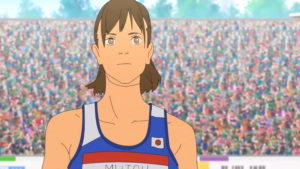
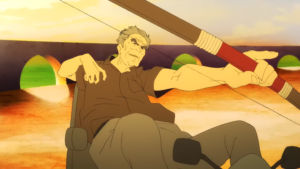
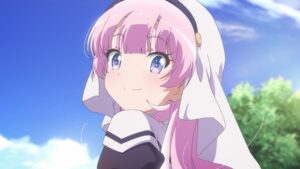
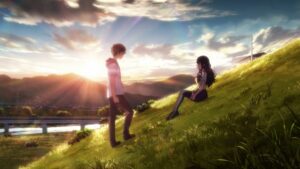
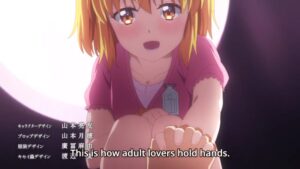
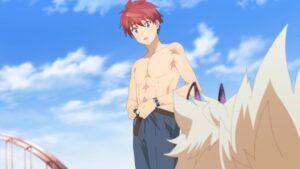
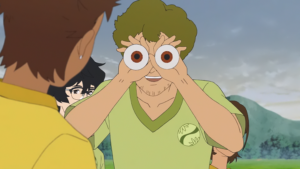
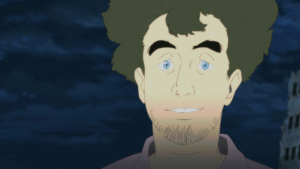
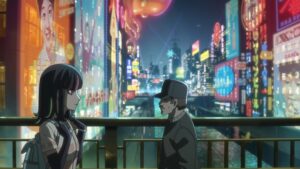
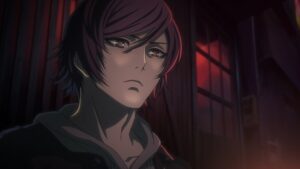
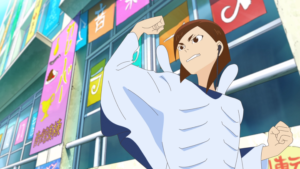

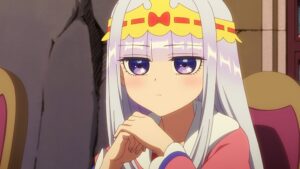
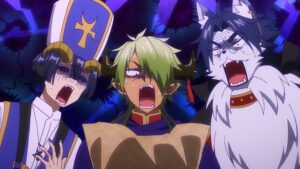
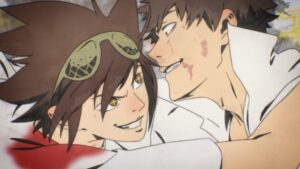
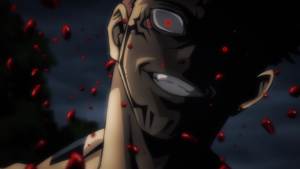
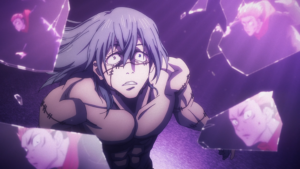
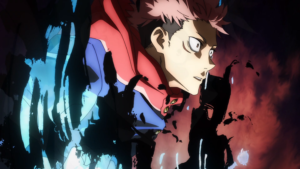

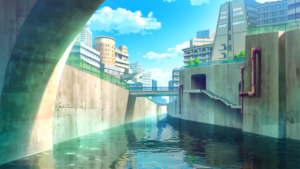
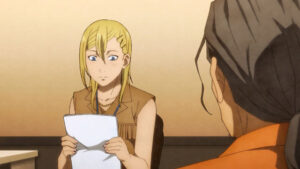
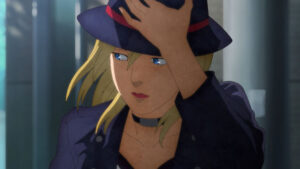

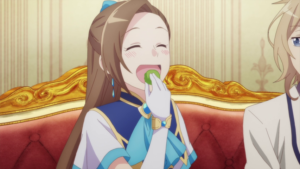
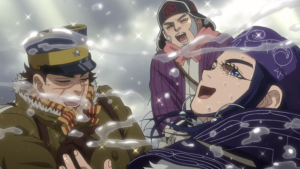
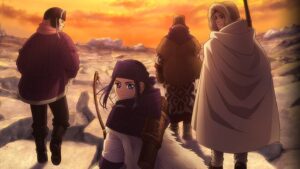
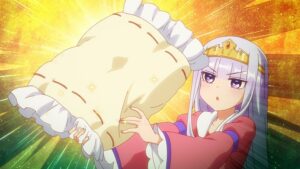
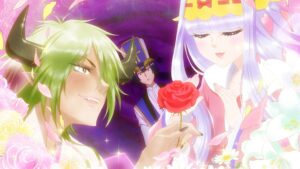
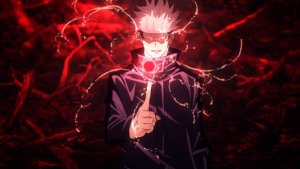

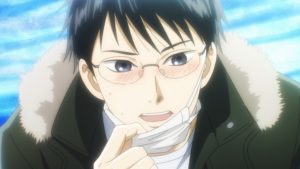
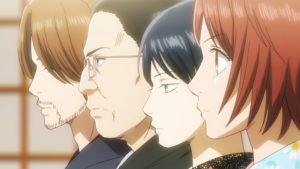
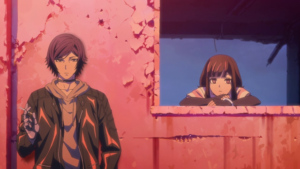
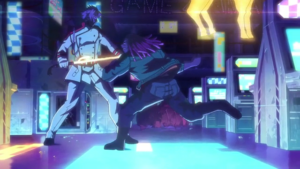
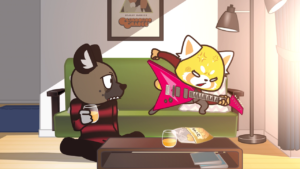
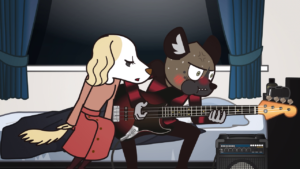
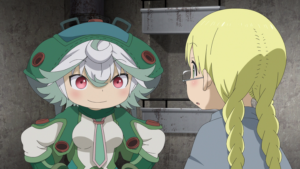
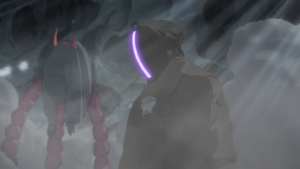
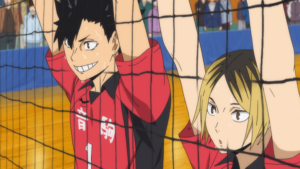
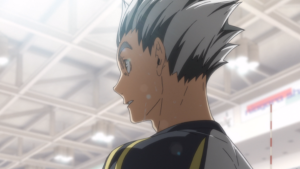
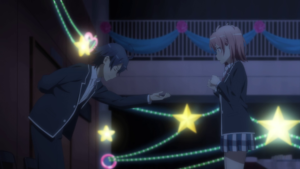
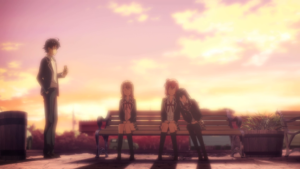
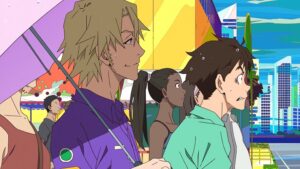
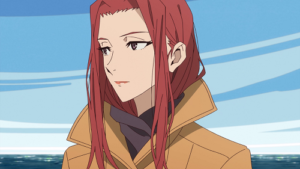
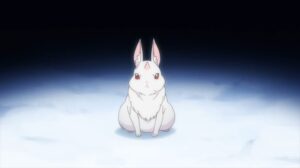
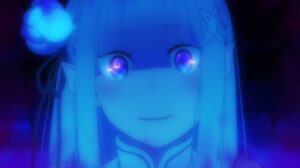
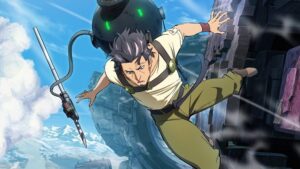
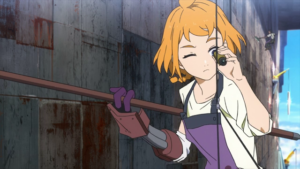
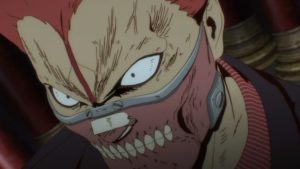
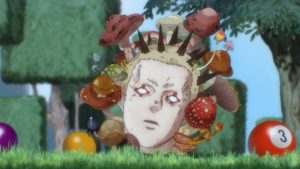
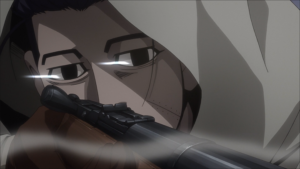
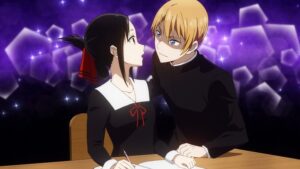

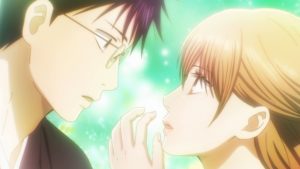
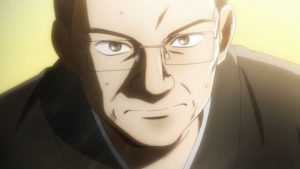
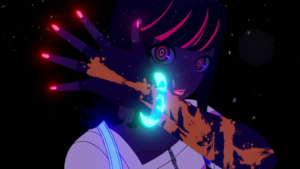
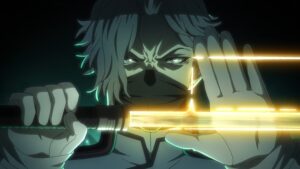
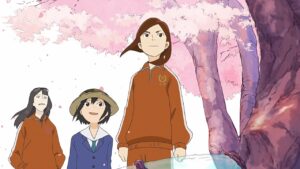
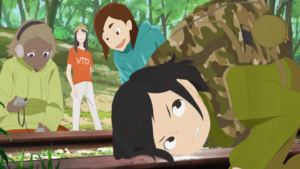
Reading all that I have about Day I Became a God, I’m glad I decided to drop it after two episodes, though the main reason for that was because the pink haired girl’s over-the-top brattiness and whiny tantrums annoyed the hell out of me. That and Wandering Witch’s inconsistency and questionable writing decisions.
I personally had Wandering Witch as my biggest disappointment.
I’m so glad Golden Kamuy grew on you!
Yeah, I too am glad it didn’t slip under the radar like its previous iterations. Given the success of the series commercially, I do believe we’ll get more seasons down the line and I can’t wait for those! ^^
Thank you for the write up. I definitely slept on quite a few shows this year but I was just enjoying all the great action anime we got since this year was especially good for action, as seen with four of your top ten being action. Overall, surprisingly good year with everything that happened.
The Made In Abyss movie really was amazing. I came out of my second viewing taking a much more uplifting view of the story. The message I got was the value of sacrifice for something greater. But whether you come out feeling good or bad, everyone can agree just how good that movie was.
Indeed, it’s nearly creeped into my personal Top 3 anime movies of all time. I absolutely love it!
I didn’t think Kamisama ni Natta hi was a disappointment because I was convinced from the beginning that it’d be a train wreck. I found Wandering Witch: The Journey of Elaina to be the biggest disappointment given the initial good first episode.
Saaaame. I dropped it after episode 3, and learning about what happens later on only made me glad I did. Ironically, I discovered the Love Live Nijigasaki anime and I wound up absolutely loving that, and this is coming from someone who normally hates Love Live!
Wandering Witch had my vote all the way. There was still some redeeming qualities in Kamisama – just the ending bombed too hard.
For those who dropped Wandering Witch: watch episode 9 (when Elaina turns mercenary). Too bad one episode does not make an anime good.
hey guys, I’m wondering what everyone here thought of the 12 episodes of Ghost in the Shell: SAC_2045?
I took one look at the CG, did a 360 and walked away.
Late post, but I’m surprised Wooper thought Appare was worse than ID Invaded (since Appare was on his top 3 worst originals and not ID). I did have issues with how Gil completely hijacked the series in the show’s third half (with an entire episode dedicated to him trash talking the entire cast and giving him an exposition dump just to show how evil he is and some of the worst plot armor I’ve seen in recent memory) but I wondered if it bothered others more than me?
At least the first two-thirds were worth watching (and a few of the episodes were some of PA Works’ best work imo). ID worked better binging it the second time around rather than catching it weekly too (and I’m looking forward to Sabikui Bisco from much of the same team).
je préfère action avec des armes comme trigun gungrave black lagoon black bullet ou type espionnage comme spy x family je me suis pas beaucoup intéresser dans le monde d’animé japonais , pour l’Instant ma liste est très courte mais j’apprécie avoir trouver que’lque-un et j’espaire que d’autre sera réaliser aux prochaines années avenir comme cathégorie que je recherche je souhaite .